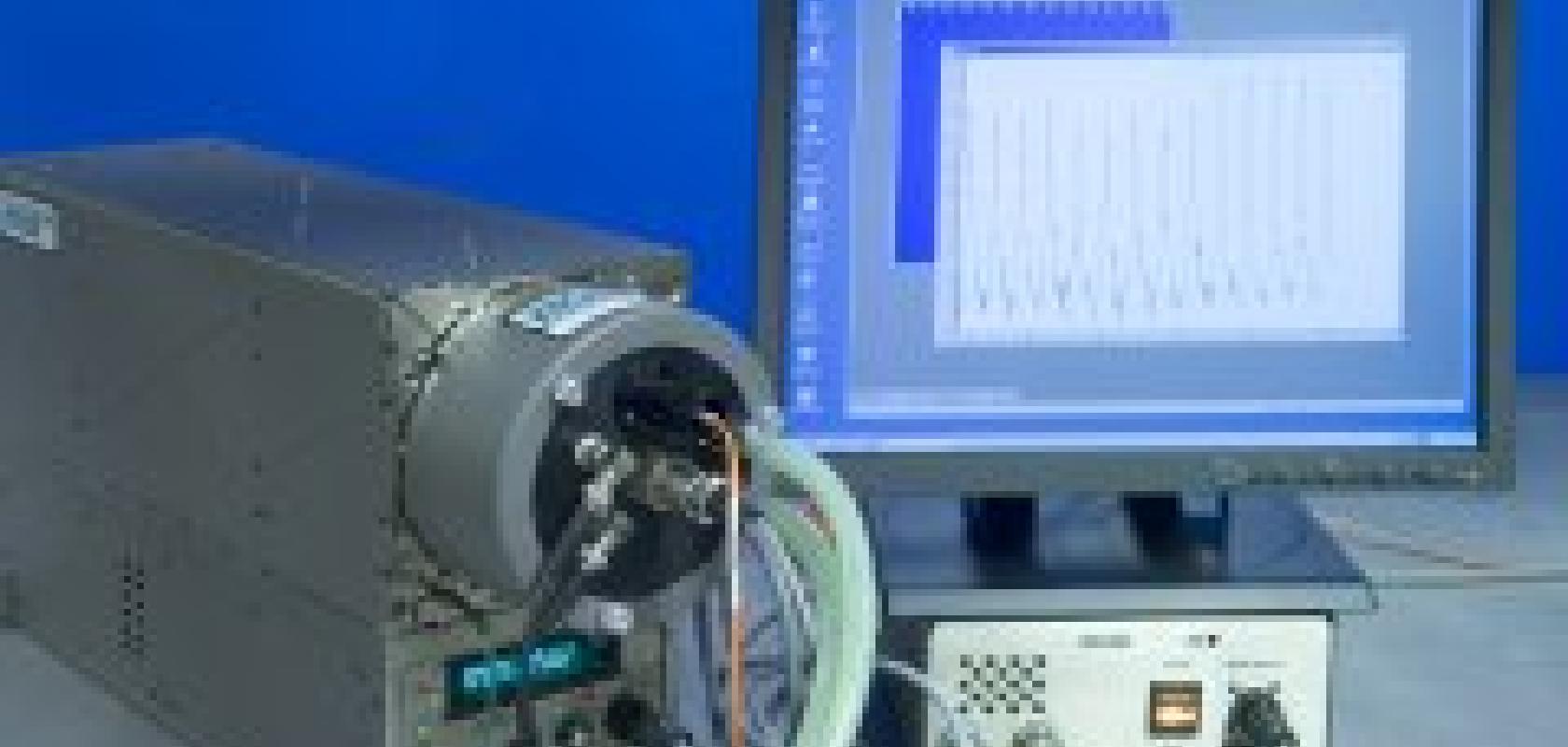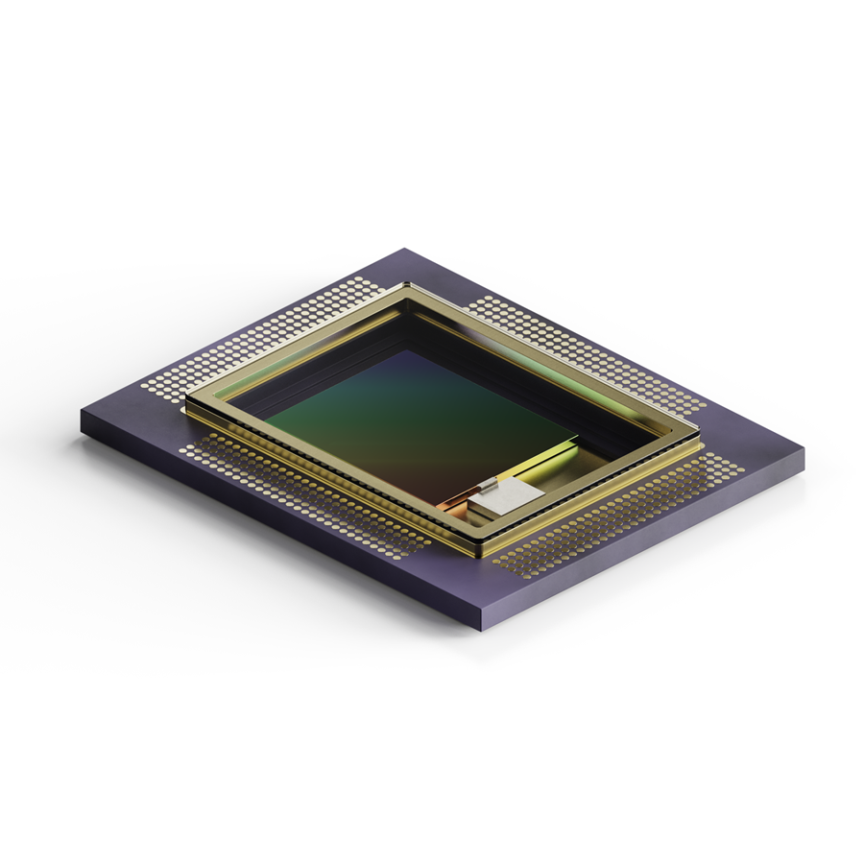Lasers are becoming more powerful, and their applications more precise. At one end, jet engine manufacturers are increasingly using fine, high-energy beams to weld exotic metals, and it is difficult to escape the delicate lettering of laser engraving, used to mark anything from children’s toys to surgical equipment.
With this trend comes the need to analyse and control the beam’s parameters adequately, which may include the beam quality, size, shape, power and wavelength, to ensure it meets the demands of the job. It is a trend that has moved test and measurement equipment from its long-held position in R&D labs to the rugged environment of the factory floor, with a whole new set of requirements.
One of Photon’s biggest announcements at May’s Conference on Lasers and Electro Optics in Baltimore, USA, was the introduction of an instantaneous M2 profiler to measure the beam quality. At the demonstration, the ModeScan Model 1780 measured the parameter more than one million times, a feat that would have been impossible with existing systems.
The need for faster measurement is typical of the new requirements of modern lasers. Many users now need to measure accurately the characteristics of single pulses, which again would not be possible without real-time analysis. The ModeScan Model 1780 achieves this by capturing 10 simultaneous images on a CCD array, finding properties such as the beam width, irradiance, and divergence angle necessary to calculate the beam’s M2; Previously, each of these would have been measured sequentially, taking up to 30 seconds to perform the full measurement.
The use of CCD and CMOS camera technology itself for beam profiling is becoming more popular, according to Allen Cary, marketing manager at Photon. ‘From our standpoint, there is a lot of growth in cameras for this purpose. They are a lot more intuitive and cheaper than the alternative, but not necessarily a better choice.’
The alternative is slit laser profilers. These are so called because the laser light is detected through two slits on a rotating drum. They are very accurate and are very simple to use. Because they lack the sensitivity of camera technology, they can also cope with direct beams of much higher powers, giving a dynamic range from milliwatts to kilowatts. However, they do not measure the whole beam for the whole time, so they cannot measure laser pulses.
Whatever the method, Cary believes that laser profiling is much more common than it used to be: ‘There has been a broader adoption of beam profiling over the past five years. In order to take advantage of the finesse of lasers, you have to measure it.’
It’s not just industry that is taking advantage of advances in laser test and measurement. Scientific experiments, particularly in particle research, have always required high precision. A recent device to come out of this area is Sydor Instruments’ Ross 2550 high-speed streak camera (pictured above).
In its original application at the Atomic Weapons Establishment, the camera helped scientists to measure pulses of laser light used to blast atoms. The pulses, which were very narrow, had to reach the target at exactly the same time, so precision was everything.
‘The camera allows the exact evaluation of each pulse as it races down the beam line,’ says Ian Johnstone, director of Armstrong Optical, which distributes Sydor’s products in England. While maintaining the high level of accuracy, the commercial version of the camera has left behind some of the more advanced features to make it more affordable for general scientific use. It now contains just one channel, and includes self and automatic calibration. Rob Roach, sales manager at Armstrong Optical, hopes it could also find use in the telecom industry.
It’s not just increased accuracy that is necessary for today’s applications. Coherent has seen a greater demand for its test and measurement products to provide more information about the data collected.
‘One trend over the past few years has been for computer interfacing, rather than just reading the data out of a meter,’ says Sean Bergman, product line manager at Coherent. ‘Quality initiatives, particularly in industry, are very demanding, and traceability at as many points as possible is important.’ Closed-loop systems with active control are also gaining popularity, particularly in delicate operations in medicine and the electronics industry.
In addition to providing products that measure the beam quality, shape and size, Coherent also provides systems to measure the power of laser beams and the energy of pulses. As with the diagnostic equipment, developments in these too have been driven by advances in laser technology, to cater for higher power and damage threshold and faster response times.
While it’s clear that the technology of test and measurement equipment is developing all the time to meet the new demands of the latest lasers, possibly the most telling indication of its increased usage is Coherent’s latest customer support programme, which includes 24-hour dispatch of its 25 most popular metrology products.
‘Whether you want to call it a fast-food nation or not, there is a need-it-now mentality,’ says Bergman. ‘People are no longer planning for these things in advance. It has become cheap enough now to be in the process of solving applications and deciding you need these devices tomorrow.’
It’s not just beam metrology that is finding more applications in industrial markets; optical systems used to profile surfaces finely are also moving away from the laboratory to the factory floor.
Ian Johnstone, director of Armstrong Optical, has seen this trend develop over the past couple of years. He says production speeds are now so fast that non-contact measurement is the only feasible option. Optics manufacturers are producing rugged and non-powered optical detectors that lend themselves ideally to production.
In particular, Armstrong Optical is distributing a range of point sensors that scan across a surface, giving a detailed 3D image profile. In spite of their ruggedness, they are also very sensitive; with a depth of field ranging from 10µm to 25mm, they are perfect for applications varying from glass production to the study of underwater fuel cells in French nuclear reactors.
Johnstone is currently investigating the medical market for these confocal microscopy sensors, where they could be used to give more detailed information about the development of tumours. The next wave of these products may include multiple sensors – up to 180 – to provide an area scan which may prove to be useful in the testing of electronics components.
4D Technology has recently produced a dynamic interferometer that produces instantaneous 3D profiling, meaning the measurement is unaffected by air turbu- lence and vibrations. This has made it ideal for the inspection of moving parts, such as spinning discs in computer storage systems.
‘The typical response is “it can’t work like that”,’ says Mike Zecchino, part of 4D Technology’s marketing and communications team. ‘But then they realise that it opens a whole new world to them.’
The system has also been widely used to test optics, such as mirrors for the James Webb telescope. In the high-precision industry of optical components, metrology is obviously equally important, and it has also experienced the push of metrology systems to the factory floor.
Many manufacturers, like Hinds Instruments, provide birefringence measurement systems specifically to test the quality of optical materials. Andy Kaplan, Hinds’ sales and marketing manager, says: ‘Our pro-ducts provide a more tightly controlled processing, so that both the speed of production, and the quality, of products can improve.’ He says that the use of these systems has been pushed right up the production line, even to the suppliers of the materials, creating a much higher standard throughout.

4D Technology's instantaneous interferometry has been used to test large mirrors used in telescopes.


